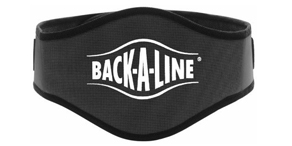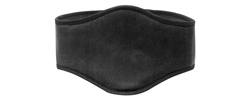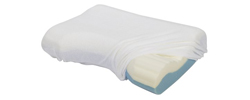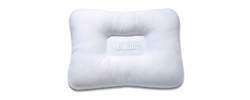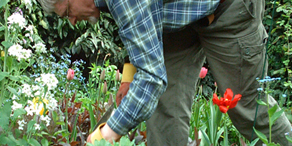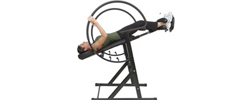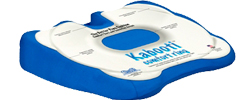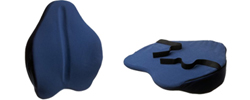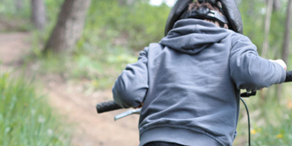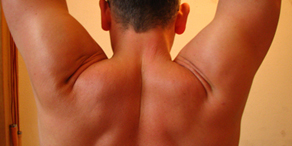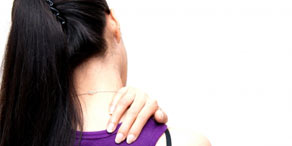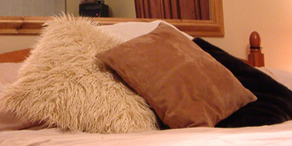Answers By Scott W. Donkin, D.C.
Q.What is the best position for sleeping – back or front? I have minor back pain on occasion and am curious if sleeping on my front is any worse than sleeping on my back? It does not seem to matter, although I sleep better lying on my front. Thanks for the help. -Mike
A: Although stomach sleeping and back sleeping are common positions, the most common and preferred position, in my opinion, is side sleeping. There are several ways to sleep on your side advantageously, and several ways that could cause problems. As with any sleeping position, the unique contours of your body must be supported in good alignment by your mattress and your pillow. For example, during side sleeping the distance, the thickness of the hips, the waist, the rib cage, the shoulders, the neck, and the head are all different. These contours must be supported by your mattress and pillow in such a way that your hips and shoulders are not in a twisted position and the spinal column is in a position that is parallel with the floor and not made to curve downward or sideways. In addition, the relative thickness or width of the hips is usually quite a bit different than the relative width of the knees when they are held together when sleeping on your side. If this distance varies too much the tendency is for the upper leg to drift over the lower leg, and this results in some tension or twisting in the hips during sleeping. It is advantageous to try a knee pillow so that the tendency to twist the hips by dropping the top leg over the lower leg is eliminated.The Contour Leg Pillow May Help side sleepers.
The common problem with selection of neck pillows for side sleeping is that the distance between the shoulders, the outside of the shoulder and the neck must be filled with pillow in order to maintain a good and comfortable position. Also, the pillow should be recessedto cup the head as this also has a different width than the neck. If the pillow is too thin and does not present an appropriate contour, the tendency is to drop the head towards the bed or jam the shoulder that is in contact with the bed closer to the body; thus, compressing your shoulder, your collar bone, and the lower part of your neck. Another aspect to consider when side sleeping is that if you sleep predominately curled up in a ball, the curves of your lower back and neck are reversed from what their normal position is. Sleeping curled up is okay occasionally, but if it is a predominate posture it actually adds to strains that you may encounter during the day in your waking hours while sitting in a car or at a work station in a slumped forward position. Sleep should be a time when your body is able to repair itself from the stresses and strains of the day and allow you to become recharged for the next day’s activities. It may seem like a daunting task to change a sleeping position, but habits can change gradually over time. If you initiate a different sleeping position when your first going to bed, then over time this will influence your sleeping positions when your not aware of your body postures.
Q.I have been suffering with deep pain on my lower left back. Painkillers don’t seem to work. I have undergone several physical therapies but got no relief. Four years ago, I had a left knee total replacement. Do you think my back problem arises from that? What is the best medication to take to ease the pain? Also, what other solutions can you suggest? Do you think I need any surgery at this time? -Saulmat
A.Following a total knee replacement, it is common for you to favor that knee when walking and moving about during the day and also while sleeping. The technology of total knee replacements has improved tremendously over the years, but recovery is still often painful and requires a concerted effort during the rehabilitation phase in order for a full recovery to be achieved. While you are favoring your knee during the recovery phase, the altered movements can definitely affect your back as well as your ankle. If a mechanical imbalance occurs that you are unable to correct during your rehabilitation phase, then you may be left with mechanical difficulties in your back that result in pain. If you are unable to follow through with your complete rehabilitation schedule you may also have less than full function in that replaced knee. If either of there is the cause, it is best to have your body mechanics evaluated to see if this is the source of your trouble.
Q.I have had sciatica for 5 years and finally had L5S1 fused, but nerve scarring remains so I am still in pain. Ironically, what caused this was trying to be physically fit. I thought I was strengthening my abs by doing sit-ups the old fashioned way, twisting and touching the opposite elbow to my knee. I didn’t realize it at the moment, but this had more devastating effects to my disk than all the tennis, running, and poor lifting techniques.-Don
A.Can doing sit-ups cause back troubles? Your situation is unfortunately all too common. We’ve seen many cases where an individual had well defined, six-pack abdominal muscles and also excruciating back pain. There is a difference between looks and function. Even with good intentions, if you use your head and neck as a handle to pull your body forward when doing abdominal crunches or other exercises, while this does tighten abdominal muscles, it opens the joints throughout the back part of the lower back and neck. This exertion can actually force a disc in between the vertebra to become damaged and move out into the nerve space between the vertebra. It sounds as though this is what happened to you. If this is the case, then it is very important for you to clearly understand your optimum body mechanics, which includes body movements and postures during all phases of your day, so that you can minimize the wear and tear rotation in the spinal joints as well as the supporting muscles and ligaments. Perhaps your question and history will help others to avoid this excruciating problem.
Q.What are the 10 steps I need to do to make my back better? I have a herniated-bulging disc, numbness, burning and tingling in my both legs. Can you help me?-GJB
A.
- f you are suffering from chronic back pain, understand that if you do the same things you’ve been doing, you’ll probably continue to get the same result. In order to change the result, you first have to change your mind and that means you have to start thinking and looking at your condition in different ways in order to find out the solution that is appropriate for you.
- Whatever therapy or regimen or combination of activities that you do, always keep in mind the ultimate goal of having a better back and experiencing less pain and difficulty.
- Seek professionally assistance when needed. Initially you must determine if the cause of your trouble is mechanical in nature, that is due to friction, irritation, or pressure in the joints, bones, muscles, ligaments, and nerves, or if your pain is referred from a source further away, such as kidney trouble or other disease processes. If you find that your troubles are mainly mechanical in nature, then it is very important for you to understand clearly how your body works so that you can understand what may be perpetuating your difficulties. For example, discover what the optimum body positions and postures during standing, sitting, and sleeping, and compare your real postures to those optimum positions.
- Have a skilled health care professional help you learn and access your body postures and movements because you may be too close to the situation to evaluate it yourself.
- Question everything and keep asking questions until you fully understand the answers to your questions and the direct application to your own condition and lifestyle.
- Consider that body balance, flexibility, and strength are all important components of having a healthy back and that flexibility usually must come before strength. If you have areas of decreased flexibility and you strengthen the areas around that decreased movement, then often you create more restriction.
- Stretch regularly and often. Make sure that collectively the stretches you do on a regular basis encourage movement in all directions.
- Deep breathing on a regular basis is also beneficial as deep breathing in itself helps improve posture, increase circulation, and increase oxygen intake to your body.
- Remember that subtle changes can have cumulative rewards. If you are experiencing acquired difficulties it could be something relatively simple and often overlooked that you can then change to improve your condition.
- Don’t give up. Determine the risks of treatments and therapies verses the benefits before you make your final decisions on what you should do. Be sure to weigh all of your options, which include traditional and alternative methods. Find others like yourself who have had similar circumstances and have succeeded. Although your solutions may be different, the fact that others have overcome their troubles should give you inspiration to continue your quest.
Q.I am a 40-year old female. I have previously had three back surgeries. My first back surgery was in 1980, when I was only 19-years old. My second back surgery was three years ago and again three months ago right before my fortieth birthday. I feel worse than ever. In my last surgery, I had a spinal fusion and three discs replaced with titanium discs. My surgery was done through my stomach because of so much scar tissue in my back from previous surgeries. Ever since my stomach was cut to perform my back surgery, the left side of my stomach, around my back, down my left leg, and down into my pelvic area are completely numb. This hurts so badly. I just wish that I had it to do over again. I would definitely do things different and go to a specialist in this field (in the spinal field) instead of just an orthopedic surgeon. I just received my Contour Pillow and Leg Pillow through the mail today, and I am hoping that this will give me at least some relief from the excruciating pain that I have to live with every day of my life. -Lisa
A.While your back condition has had a devastating affect on your life, I commend you for your willingness to look for ways to help yourself. Please read the previous question for suggestions for helping make your back better. Carefully read the information inside the Contour Pillow and Leg Pillow packages, so that you can understand their optimum use. I sincerely hope this helps you.
Dr. Scott Donkin is an expert in occupational health and wellness with a successful private practice in Lincoln, Nebraska. He is the author of Sitting on the Job, How to Survive the Stresses of Sitting Down to Work – A Practical Handbook


